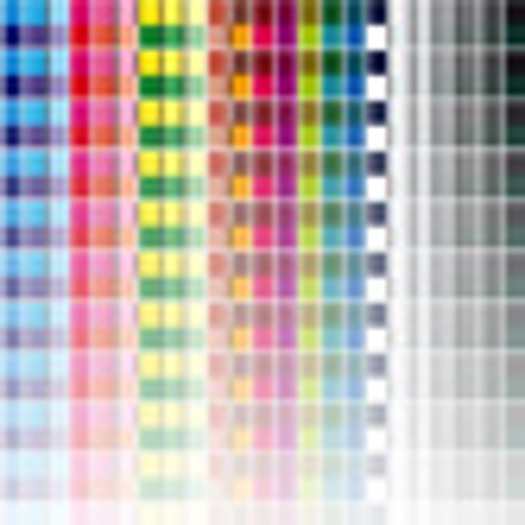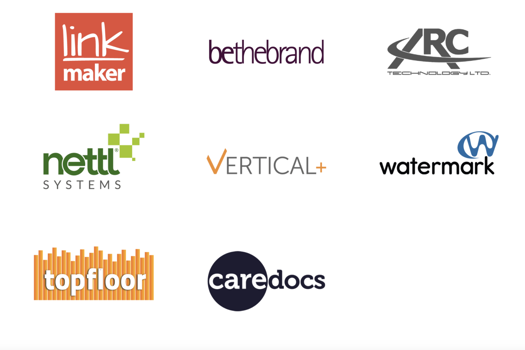Click here to return to the Technology report contents page
Colour control is a bitter medicine, according to Alan Dresch. That makes Dresch, who, as managing director of Mellow Colour, has been toiling away for the best part of a decade identifying the symp- toms and the causes and working on a cure, a doctor for printers who have been feeling off-colour.
For ‘Doctor' Dresch there isn't a sugar coating for this bitter pill, but he says like so many cures the results down the line make even the most recalcitrant patients glad that they took their medicine.
"Most print managing directors will only do it because a customer demands it and they risk losing them as a client," he adds. "And then, six months, into the process they turn around and say that it's the best thing that's happened to the business. After the fact they realise that they've become a better company."
That's strong stuff indeed, but isn't all this high-falutin' colour stuff just for the big boys, and doesn't it cost a fortune to implement? No.
A typical figure for the minimum necessary software and a spectrophotometer is £2,000, according to Ian Reid, managing director of Bodoni Systems, which will sell you PressSign and an X-Rite i1 for just that figure. It's a similar amount for the equivalent package from Dresch's Mellow Colour.
That's a lot less than the five- or six-figure ticket price on a closed loop system from one of the press manufacturers. Granted, they do different things, but it's perfectly possible to get to ISO 12647 without an on-press system.
Most colour specialists welcome the development of the UKAS-backed ISO 12647 accreditation scheme that the industry, including the BPIF, has been working on, as it brings in rigour and definition to the process of getting correct colour on press. But while having the accreditation on the wall may impress buyers and be a prerequisite for getting to pitch, following the processes day to day ensures that you are actually producing consistent work which is much more important.
Dresch doesn't believe there's a buyer out there now who hasn't heard of ISO 12647, but understanding what it and the host of other accreditations available mean is a minefield. While buyers will have heard of ISO 12647, with the UKAS-accredited scheme only just up and running and other options such as Ugra and Fogra not necessarily widely understood, the question "Have you got ISO 12647?" is open to interpretation. "Have you got ISO 12647 accreditation?" is less so. If you're working to the specification, you can say so. You can't claim to be accredited, but that may be an expense that's not necessary.
"Even if you don't get certified it will improve your company" says Dresch. "It's more valuable to have a system in place. If you've just got a piece of paper on the wall you can still screw up and you'll easily be found out."
"Now that it's possible to become ISO 12647 certified, people assume that you need the accreditation," says Paul Sherfield, managing director of The Missing Horse consultancy. "But you don't, unless your customers ask for it."
Even if you do get to the stage when your clients are clamouring for you to have the accreditation, you can still get by with the basic investment.
"You don't need closed loop for UKAS. But you may find it tough making enough readings in a typical print run," says Bodoni's Reid. "If you're measuring by hand and adjusting the keys manually there is a time lag; if you measure automatically you can get to target more quickly."
For Sherfield the firms that reap the most benefits from improved colour control are B2 printers, and they can expect to get a return on their investment inside six months.
Those benefits include reduced paper wastage, which can be halved from 400 to 200 sheets and shortened makeready times, which may also be halved from half an hour to 15 minutes.
Dresch echoes these findings, though he reports slightly less dramatic figures for his clients, with one reporting average makereadies falling from 35 minutes to 20 and the sheets from 500 to 350.
Sherfield refers to what he calls soft cost benefits that can make a big difference to your operations.
"By cutting makeready times you can produce more work per shift, which if you need it means you've effectively increased capacity," he says. "With six or seven makereadies per day, if you save 10 minutes per makeready you may find you can squeeze in another couple of jobs."
He adds: "One of my clients found that last year he actually increased his sales by 7%."
If you are in the envious position of needing more capacity, a minimal investment to get more out of what you've already got has got to be a more attractive and - with credit lines tight - feasible, way of getting it than buying a new press. Also, in these days of shorter and shorter runs, anything that reduces makeready times is tackling your biggest problem head on.
Invest in staff
While first thoughts might be about the financial investment in the necessary kit, Dresch argues that the real differentiator comes from investing the time and effort in getting your staff up to speed.
"Printers these days have all got the same kit, the differences are in the systems, and that comes down to the people," he says.
His advice when it comes to implementing colour control is to do it yourself, albeit with the support of a supplier or expert consultant.
"Don't get the press manufacturer to come in and set up the press once and then go away. In a month's time you'll be back where you started. See this as a one-off opportunity at investing in the intellectual property within your company."
The human factor is crucial, albeit something of a tightrope. On the one hand Dresch argues you need a colour champion to take the lead and pull the project together, and the full commitment of the managing director, but on the other, you want to spread the expertise widely within the departments.
"Don't invest in just one person; a colour guru can make things tricky by getting uppity with their colleagues, and if it's just one person there's always a risk that they might get hit by a bus," he says.
He adds that the benefits of having a cross-department and cross-discipline team work on colour is that it has a knock-on benefit; it breaks down barriers between departments and fosters a more co-operative working environment all round. By having a group of experts it's easier to understand the entire reproduction process, and therefore to make it easier
to identify where any problems lie, for example isolating it to a glitch with grippers on the magenta unit or an issue with
the ink.
"If you can tell the suppliers what the problem is, rather than relying on them to come out and identify the problem, you can save a fortune," says Dresch.
In this case the doctor's prescription is to learn a little bit of colour first aid so that you can become your own physician and heal yourself.
COUNTING THE COSTS: £2,000 set-up costs might be optimistic
While you can get started for a headline grabbing two grand for the requisite software, from the likes of Bodoni, GMG or Mellow Colour and a basic spectrophotometer like the X-Rite i1, The Missing Horse's Paul Sherfield argues that it's better to budget for a bit more, as there may be other areas of your workflow that need attention.
In pre-press the prerequisites are rock-solid contract proofing and colour management in your RIP. He suggests allowing £2,000-£3,000 to upgrade an existing B2 proofer or £5,000 to get a completely new one.
Even if in the end your costs are more like £10,000 than £2,000, Sherfield points out that if the new way of working prevents colour problems on two or three big jobs which would have required reprinting, it will have paid for itself.
If you do want to go for the closed-loop option, where the measurements from the sheet are fed back to adjust the ink keys, you'll want something more sophisticated than the i1, such as the X-Rite EasyTrax or the Techkon SpectroJet.
"You don't want a misreading to go back to the console, and with a handheld instrument you're more likely to make a mistake," says Reid.
"95% of the time it will be fine but a manual system is subject to human error. That said, if you're adjusting manually you can see the error and re-read."
On-console measuring adds £8,000-£10,000 and according to Reid full closed loop, including the integration with the press, costs £20,000-£30,000, depending on the press.
However he adds that is still significantly less than doing it through the manufacturer, which will cost a minimum of £50,000.










